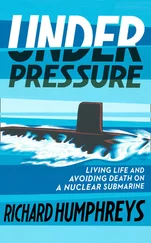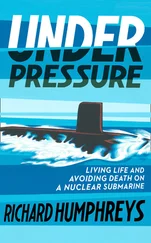The lead violinist in an orchestra doesn’t just look at the music (detail) but also focuses much of the time on remaining in sync with the conductor and setting the rhythm for the whole orchestra (overview). This is so important that the second violinist turns the pages for their more senior colleague.
For flight crews, losing focus on the overview (called situational awareness) can and does lead to tragedies. Dual focus isn’t a desirable add-on, it’s a sharp-edged performance essential. It’s vital for flight crews to execute tasks accurately but it’s also vital for them to remain alert to changes in their environment.
It’s common for surgeons to face complications within an operation, or timing issues requiring careful rearrangement of their surgical list. Experienced surgeons have told me that as their decision-making abilities have developed in these areas, so has their execution. They make fewer errors when they make better decisions. If we are constantly updating our overview and continuously adjusting the specifics of the task we’re doing, we are in a good place.
Dual focus is nothing more than an ordinary, everyday mental process – paying attention – but maintaining this focus under an extraordinary set of circumstances is another matter again. High performers do not have different mental apparatus when it comes to paying attention. Everyone can check the overview and focus on the task, in ordinary circumstances. Whether you’re a surgeon, teacher, taxi driver or graphic artist, the trick is not letting your focus fall away into split attention when the pressure is on.
Under pressure, do you tend to get diverted into the RED and halve your mental efficiency, or do you do double time into the BLUE and accelerate with undivided attention?
Which are you more skilled at: the situational overviewor the task detail? Would other people who know you well say that, under pressure, you are both awareand accurate?
Going APE vs Deciding to ACT
APE
Under pressure we all fail in predictable ways.
We’ve looked at how the same emergency reactions seen in animals – fight, flightor freeze– are triggered in modern-day performance situations, although usually more by social threats than physical danger. To help us translate them from the animal kingdom to our world of performance, let’s modernise the behaviours by renaming them.
Rather than fight, think aggressive. Under pressure, people raise their voices, threaten, bully, confront, insult, reject and exclude.
Rather than flight, think escape. Under pressure, people remove themselves from the fray by being late or not turning up, taking sick leave, resigning, or getting sent off the sports field.
And rather than freeze, think passive. People who can’t get out of a situation may not go completely immobile, but they go quiet and look down when volunteers are requested, always letting others go first and staying a step behind, just generally going through the motions.
For my money, the passivereaction is the invisible killer of performance. People can hide in plain sight by being present and operating at a minimum standard, doing just enough to avoid drawing attention to themselves as not contributing. It’s a silent epidemic that can completely undermine a team dynamic.
Many team-sport athletes know this type of player: the one who is on the field but never really gets their hands dirty, and always seems to be one step off the pace. Large organisations are often full of people who say the right things but whose actions lack impact.
Sometimes the passive state can be misread as being relaxed: a basic but common error in the sports world. Unless we are an animal playing dead and hoping to escape, it is a poor performance state.
These three styles of behaviour, aggressive, passiveand escape– APE– are the three most unhelpful reactions we have under pressure. They all arise from RED, high-arousal reactions; even the passivereaction, involving low arousal, follows an initial high-arousal spike. The APE acronym reminds us that we share these responses with most members of the animal kingdom – and they are most definitely within us all.
In our early years, we all develop a personal pattern that means one of these three becomes our default reaction to extreme pressure. Or it might be a combination of two, or all three. Passive–aggressive behaviour is a classic example.
Recognising our personal defensive behaviour style and how it hurts our performance will show us what traps to avoid in the future. If we take this step, we are already in a stronger position to perform under pressure.
What APE pattern do you default to when you fall apart under pressure – A, P, E, or a deadly combination?
Under pressure we all succeed in predictable ways.
Peter is a foreman leading an expensive new house build that is just three weeks out from the date when the owners expect to move in. His team is facing pressure on several fronts. The architect has identified a large area of plastering that will need to be redone. One of Peter’s senior builders has had an accident onsite, which has triggered a health and safety investigation and left Peter short-handed. Plus, Peter’s usual subcontracting electrician isn’t available because of a family bereavement, and the replacement is not fitting in well with his team. On top of that, there’s been an extended spell of poor weather.
It would be very easy for Peter to fall into APE behaviours that block progress instead of moving his team forward. The pathway ahead, though, is clear.
First, he needs to stay aware of his internal reactions, to limit any APE behaviours. It won’t help for him to go deep RED right now!
Second, he needs to be clear about the proper process for the health and safety investigation, the repair timeline for the plasterers, and his expectations of the replacement electrician.
Third, he must stay on top of his crew and make sure that each task is finished calmly and efficiently, so that they get the house built on time.
This aware–clear–tasksequence – or ACT– stands in contrast to the RED-fuelled APE reactions, which are characterised by lack of self-awareness, lack of clarity, and off -task behaviours. No matter how big the moment of pressure, we are well served by an ACT approach because it leads to specific actions that create movement.
ACT needs our BLUE mind to fire strongly. Because the BLUE mind is linear, it loves short sequences, so the three ACT steps are a good fit. (As we’ll discover, the RED–BLUE toolis based on the very same sequence.)
To be awarerequires us to step back and reflect, which is a core BLUE-brain activity. Once we have a good idea of our external situation and our personal reaction to it, we can ensure we’re clearabout what needs to be done first, and how to do it. Plenty of people start doing things without being awareand clear, and so the impact of their actions is diluted. There’s a lot to be gained from a deliberate process of considering alternatives and consequences before deciding to act.
Once we’ve made our decision, we can carry out our taskaccurately. If we are aware and clear, there is no doubt or vagueness to divert us, and our actions will have impact.
BLUE-based ACT responses are based on a desire to function better in challenging situations, while RED-driven APE reactions are based on getting out of threatening situations.
Читать дальше












